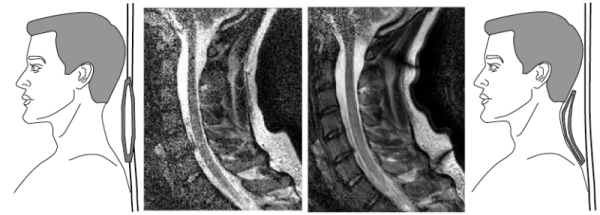Researchers develop flexible MR coil to improve comfort and decrease scan time

Is Your Patient Flow on Track?
Few things stop patient flow in its tracks faster than unavailable equipment! Find out how Philips Multi-Vendor Services can help keep your patient flow on track, while ensuring you have accurate insights. Click to find out more![]()
The coils are made from screen-printing technology and are designed to work with 1.5T and 3T MR machines. They can be reused, instead of each patient having a customized coil, but the researchers do say that the coils can be tailored for individual patients if needed.
In the image below, the left shows that an MR scan with a coil removed from the patient is not as clear as the developed coil that is placed against the patient.
A prototype was created in which the coils were wrapped inside a blanket for an infant. “Not having to experience the trauma of long MRI exams is a significant benefit to pediatric patients and their parents during what is often a trying time,” says Guoying Liu, director of the program for magnetic resonance imaging and spectroscopy at the National Institute of Biomedical Imaging and Bioengineering, in a statement.
The team at University of California, Berkeley partnered with Shreyas Vasanawala, a pediatric radiologist at Lucile Packard Children’s Hospital, and GE Healthcare to transition the new coil to clinical practice.
The main difficulty with MR systems is that they take a long time, sometimes more than an hour, because of their low sensitivity, according to the announcement. And patients have to stay perfectly still in the machine the entire time to reduce the artifacts in the resulting image.
“This new development is an excellent example of how new technologies can come together to create a better experience for the patient,” said Liu.





Комментарии